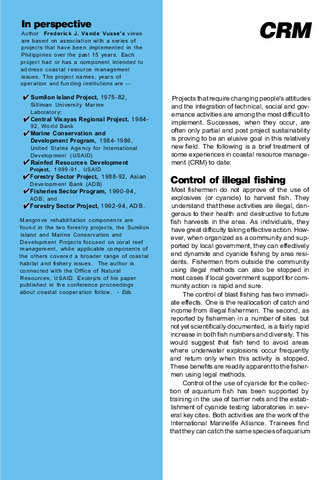Tale of two successful fisheries management schemes adopted in Japan
Share
Abstract
The SEAFDEC Regional Guidelines for Responsible Fisheries in Southeast Asia: Responsible Fisheries Management (SEAFDEC, 2003) indicates that fisheries management refers to the “integrated process ofinformation gathering, analysis, planning, consultation, decision-making, allocation of resources, and formulation and implementation, with enforcement as necessary, of regulations or rules which govern fisheries activities in order to ensure the continued productivity of the resources and accomplishment of other fisheries objectives.” In addition, SEAFDEC (2003) declares that innovative fisheries management implies the “decentralization of selected fisheries management functions to the local level and progressive introduction of rights-based fisheries through …” where rights-based fisheries is defined as “fisheries where the right to fish or use of the fisheries resources is licensed or permitted by the competent government authority, giving the licensed fishers access and use rights to the fishing ground. Such rights are accompanied by obligations to comply with the rules and regulations of the right-based regime.” Nevertheless, Garcia et al. (2003) explained that although there are 'no clear and generally accepted definitions of fisheries management, its working definition pinpoints to the activity of protecting fishery resources so sustainable exploitation is possible, drawing on fisheries science, and including the precautionary principle.' Moreover, Garcia et al. (2003) also prescribed that the concept of modern fisheries management refers to a governmental system of appropriate management rules based on defined objectives and a mix of management means to implement the rules, which are put in place by a system of monitoring control and surveillance, and based on an ecosystem approach to fisheries management. Guided by their respective adaptations of the generally-accepted definitions of fisheries management, the Fisheries Cooperative Association of Toushi Island and the Gifu Prefecture in Japan have adopted their particular fisheries management schemes that have proved to be successful through the years, and which could be referred to as mainly quasi-democratic and quasi-persuasive, respectively.
Suggested Citation
Sato, A., Silapajarn, K., & Sulit, V. T. (2018). Tale of two successful fisheries management schemes adopted in Japan. Fish for the People , 16(3), 41-45. http://hdl.handle.net/20.500.12066/4327
Subject
Collections
Related items
Showing items related by title, author, creator and subject.
-
Status of Fishing Conditions in Cambodia
Sour, Kim; Vuthy, Ros (Training Department, Southeast Asian Fisheries Development Center, 1997)Fisheries in plays a very important role in Cambodia’s national economic development. Total fish catch production in 1996 was 104 310 tones, about which 60% was contributed by inland capture fisheries, 30% by marine capture ... -
The Status of Fisheries in the Republic of Maldives
Faiz, Mohamed (Training Department, Southeast Asian Fisheries Development Center, 1997)The paper discusses the tuna fisheries in Maldives which dominates its fishing industry. Apart from a very strong domestic market, tuna is also the main export commodity of the country. Moreover, reef fisheries such as, ... -
CRM in the Philippines: Lessons learned
Southeast Asian Fisheries Development Center, Aquaculture Department (Aquaculture Department, Southeast Asian Fisheries Development Center, 1996)Philippine coastal communities can become capable fishery resource managers and that their management practices can become largely self-sustaining if the project approach focuses on assisting fishermen to learn how to help ...





